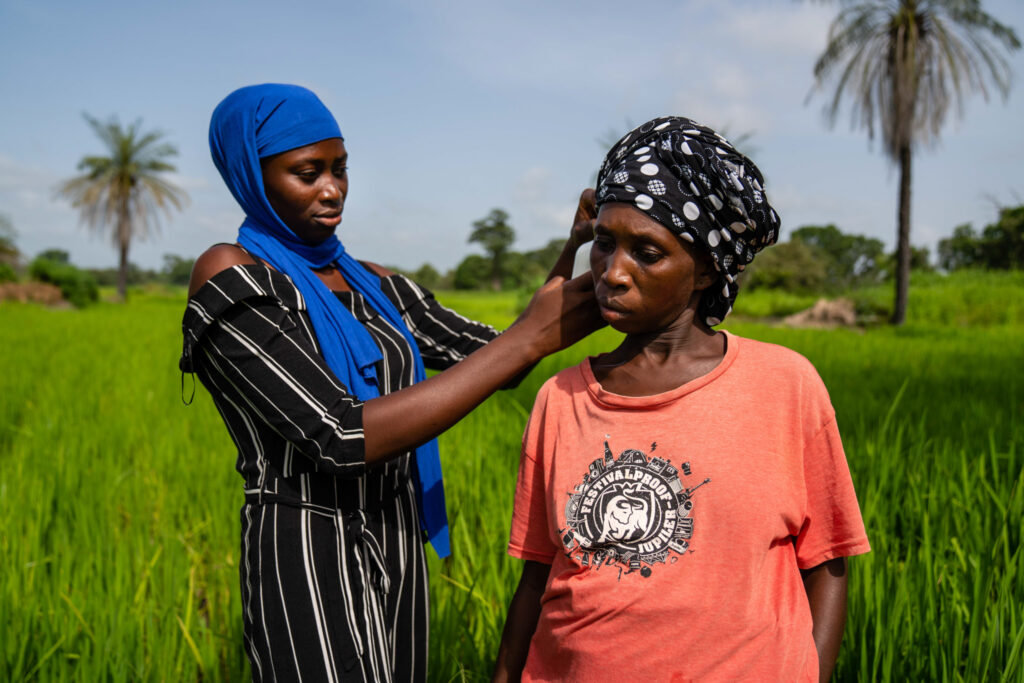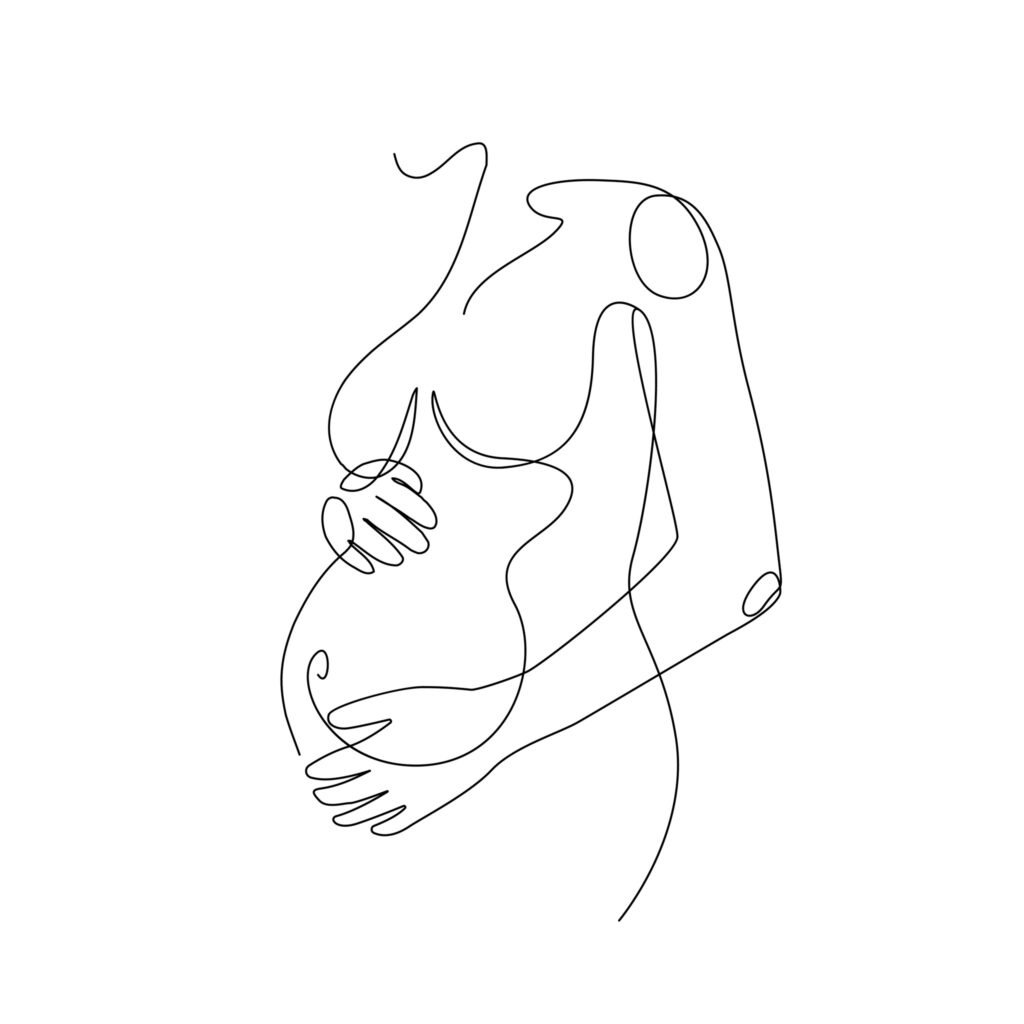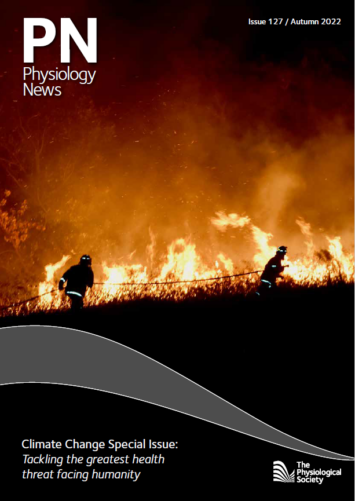
Physiology News Magazine
Heat stress and its severity during pregnancy
The worsening realities of heat stress for pregnant women in West Africa
Features
Heat stress and its severity during pregnancy
The worsening realities of heat stress for pregnant women in West Africa
Features

https://doi.org/10.36866/pn.127.19
Dr Ana Bonell
London School of Hygiene & Tropical Medicine, UK
We all know that the climate is warming, and that this is changing our weather and increasing the frequency of heat waves, hurricanes, flooding, and drought. Two additional risk factors to the health effects of extreme heat are pregnancy and working outdoors–something millions of women across the tropics, who perform formal and informal labour, experience. Understanding how heat is impacting these women, who live in the most vulnerable and affected areas, is important in order to place their experiences at the centre of our understanding and to build the relationships that allow co-production of adaptation policies. In this article we focus on pregnant or recently pregnant subsistence farmers in The Gambia, West Africa to explore their experience of working in the heat whilst pregnant (Spencer et al., 2022).
Impacts of climate change in West Africa
In the Sahel region of West Africa 50%-100% of the population will be at risk from extreme heat by 2100 under current emission scenarios, with current levels around 20%. Extreme heat definitions depend upon geographical region, as humans acclimatise to the region they live in. Heat stress indexes, such as the Wet-Bulb Globe Temperature (WBGT) or apparent temperature allow temperature and humidity to be combined into a metric that takes into account the impact of humidity on heat loss, as it is harder to lose heat as humidity rises. Dangerous levels of heat stress occur at WBGT above 31C. Additionally, reduction in crop production and yields (due to soil degradation and changing rainfall patterns) will plunge a similar number into food insecurity – resulting in the reduction in quantity or quality of food, increased experience of hunger and malnutrition and the resulting impacts on health and wellbeing.
Subsistence farmers
In The Gambia, more than 60% of the population work in agriculture. The Gambia is similar to much of the world, where most farms (84% globally) are small-hold farms, they produce up to 1/3 of the world’s food but usually are entirely dependent on manual labour, with very little mechanisation. These farmers are usually amongst the world’s poorest, often experience food insecurity and are considered particularly vulnerable to the impacts of climate change.

Why focus on women?
Women make up 50% of the small-hold agricultural workforce and in many places, including The Gambia, the work is gendered. Women work in the horticultural gardens and rain-fed rice fields, whilst men grow cash crops or are responsible for animal husbandry. Due to the gendered nature of the work, women can work outdoors throughout the year, even during periods of high heat stress. Additionally, women and girls remain responsible for much of the domestic work, including chopping and collecting firewood, collecting water and cooking and therefore have limited ability to shift work patterns to reduce heat exposure to cooler times of the day.
Globally, women and girls are found to be at increased risk of the impacts of climate change (United Nations). This is due to embedded inequalities, societal and cultural factors. An example of this is seen in published research, where few studies focus on women farmers despite their often vital role in providing food for the family. Women’s voices are also often missing from policy and decision-making, reducing their ability to provide valuable insights into solutions from their perspective.
Added risk in pregnancy
Pregnancy is a vulnerable time in a woman’s life. Mothers exposed to high temperatures suffer with increased rates of miscarriage, congenital abnormalities, preterm birth, stillbirth and low birth weight babies (Chersich et al., 2020). For example, women exposed to heatwaves are 16% more likely to have a preterm birth than those not exposed. Much of the knowledge of this risk comes from temperate climates where women are not exposed to high levels of heat throughout their pregnancy and predominantly do not perform manual labour throughout pregnancy. A recent study of heat in pregnancy in lower income countries found a similar effect – heat increased the risk of stillbirth and preterm birth (of particular concern in settings with limited healthcare resources) (McElroy et al., 2022). It is likely that women working in the heat are at even more risk than an average population risk, due to exposure during the hottest part of the day.
Experience of working in the heat when pregnant
All twelve of the women we interviewed recognised that they were being exposed to high levels of heat stress and that this had worsened in the recent years. Almost all of them found working in the heat harder when pregnant compared to non-pregnant. They also experienced that their bodies felt the heat more acutely and that it seemed more difficult to cool down or stay cool when pregnant: “I feel like my body is burning”. The most common symptoms they experienced were headaches, dizziness, tiredness, nausea and chills.

Ways to cope or reduce heat exposure
Community support from nearby family was often instrumental in reducing heat exposure, where physical work, domestic chores and childcare duties were shared. However, in most instances this remained highly gendered with sisters, female relatives or co-wives providing the support. Working as a group had some benefits – in that others would help to water their plot on days they were not feeling well, but could also cause problems with social pressure to work the land coming from other members in the group, even when feeling unwell.
Socioeconomic factors were also important, with several women describing that spousal support allowing them to reduce the amount they needed to work in the fields; however, this was not possible for most of them.
Finally, the women used several personal cooling strategies: self-pacing, frequent breaks, cooling with water on their heads or showers, freely drinking cold or iced water, reduction in land cultivated and altered work schedule to reduce exposure.
Difficulties in reducing heat exposure
However, many women (33%) stated that they would have liked cold/iced water but did not have access to this due to lack of electricity and/or money. There were also difficulties in wearing cooler clothing whilst working in the field with cultural concerns preventing them from wearing clothes that they would then wear around the home. Some of the women (17%) also acknowledged that they would prefer not to work in the fields and so protect themselves, but without start-up capital for alternative business ventures, this was impossible.
Most pressing concerns about climate change
All the women farmers shared that they have seen a significant change in the weather in the last 5-10 years with an increase in heat and intensity of the sun and a reduction and shortening of the rains. This has already reduced the amount of crops they are able to produce, especially the rice yields. Where this previously would have provided enough food for the family for the following 6-8 months, it now will only last 3-4 months. They also described the intense heat burning plants and the difficulties in accessing water during the dry season. The women almost all expressed great concern regarding their ability to produce food and income, and hence, the ability to provide for their family needs going forward.
Improving the working practices for pregnant women
All the women in this study experienced symptoms of heat illness and struggled with working in the heat when pregnant. Despite understanding how to minimise their exposure to heat, this was often not possible. With rising temperatures, alterations in the rainfall and worsening crop yields, this reality is likely to become worse.
This work complements a project exploring the physiological changes in pregnant subsistence farmers exposed to high levels of heat stress (Bonell et al., 2020). By understanding the reality of current heat exposure levels in this region, the resultant physiological changes to both mother and fetus (Bonell A et al., 2021), within the context of women’s lived experience, we can attempt to place these women at the heart of any future adaptation strategy.
References
Bonell A et al. (2020). A protocol for an observational cohort study of heat strain and its effect on fetal wellbeing in pregnant farmers in The Gambia. Wellcome Open Res 5, 32. https://doi.org/10.12688/wellcomeopenres.15731.2
Bonell A et al. (2021). Assessing the effect of environmental heat stress on maternal physiology and fetal blood flow in pregnant subsistence farmers in West Africa. SSRN. https://doi.org/10.2139/ssrn.3965382
Chersich MF et al. (2020). Associations between high temperatures in pregnancy and risk of preterm birth, low birth weight, and stillbirths: systematic review and meta-analysis. BMJ 371, m3811. https://doi.org/10.1136/bmj.m3811
McElroy S et al. (2022). Extreme heat, preterm birth,and stillbirth: A global analysis across 14 lower middle income countries. Environment international 158, 106902. https://doi.org/10.1016/j.envint.2021.106902
Spencer S et al. (2022). The challenges of working in the heat whilst pregnant: insights from Gambian women farmers in the face of climate change.Frontiers in Public Health 10, 785254. https://doi.org/10.3389/fpubh.2022.785254
United Nations (no date). Women, gender equality and climate change. Women Watch. Available online at http://www.un.org/womenwatch/feature/climate_change/
